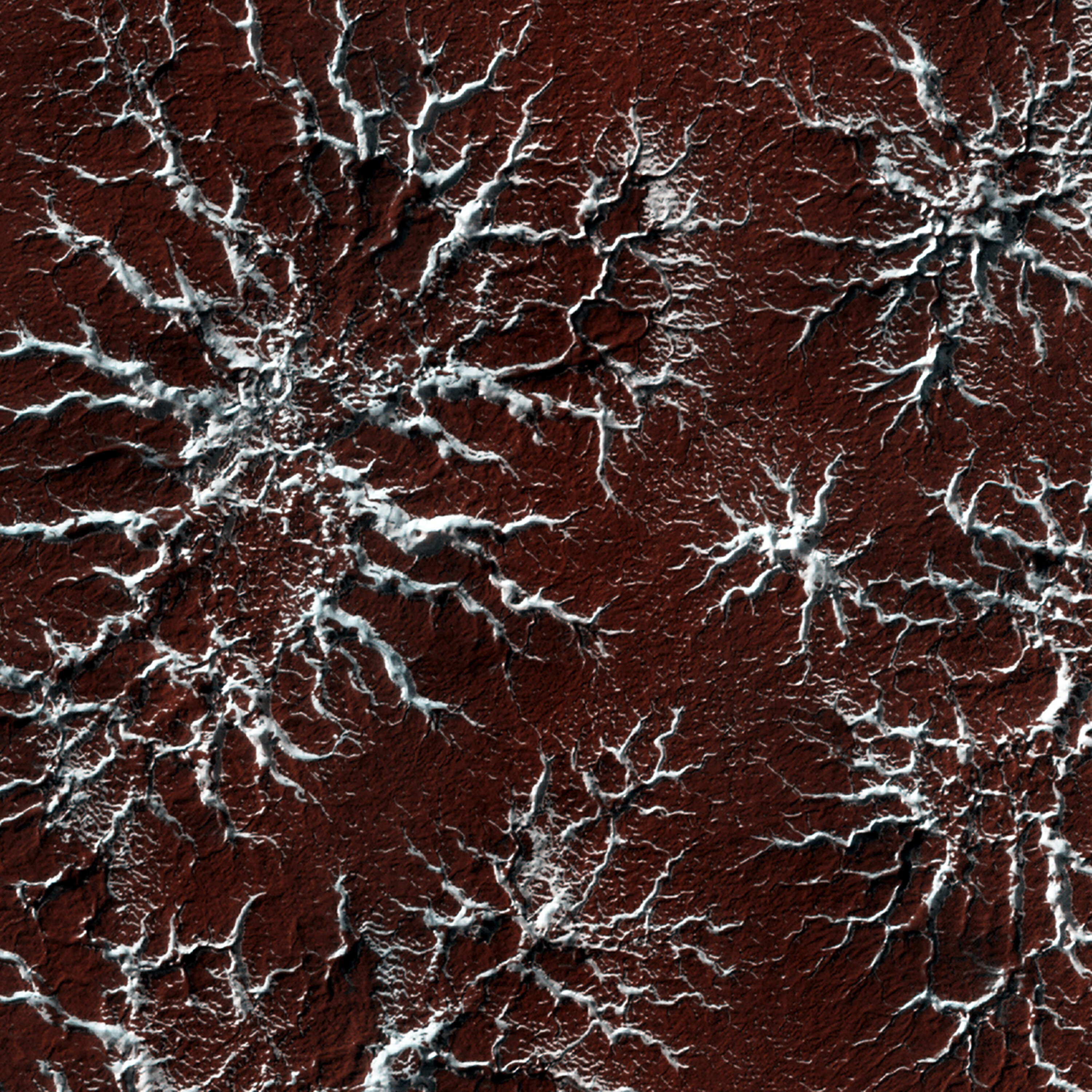
Mars “spiders” recreated in the lab

Planetary Radio: Space Exploration, Astronomy and Science
Deep Dive
What are the 'spiders' on Mars?
The 'spiders' on Mars are actually a type of Martian terrain called oraniform terrain, characterized by branching, spider-like formations. They are created by the seasonal sublimation of carbon dioxide ice (dry ice).
How are the 'spiders' on Mars formed?
The 'spiders' are formed when carbon dioxide ice condenses on the surface during winter, then sublimates in spring, turning into gas. The gas builds up pressure, cracks the ice, and erupts, creating a network of troughs that resemble spider legs.
Why are the 'spiders' primarily found in the Southern Hemisphere of Mars?
The 'spiders' are primarily found in the Southern Hemisphere because the conditions there, such as ice thickness and translucency, are more conducive to their formation. The exact reasons are still under study.
What is the Kiefer model, and how does it explain the formation of 'spiders'?
The Kiefer model suggests that in spring, sunlight penetrates translucent ice on Mars, warming the ground beneath it. This causes the ice to sublime from the base, turning into gas. The gas builds up pressure, cracks the ice, and erupts, creating the spider-like channels.
What are recurring slope lineae (RSL) on Mars, and why are they significant?
Recurring slope lineae (RSL) are dark streaks that appear on slopes during Mars' summer. They were initially thought to be evidence of liquid water, which is crucial for potential life. However, recent theories suggest they may be caused by dry flows of sand.
What is the quasi-moon naming contest, and how can people participate?
The quasi-moon naming contest is a collaboration between Radiolab and the International Astronomical Union to name a quasi-moon of Earth. People can vote for their favorite name from seven finalists until January 1st, 2025, at radiolab.org/moon.
What are some key differences between the 'spiders' on Mars and lake stars on Earth?
The 'spiders' on Mars are formed by the sublimation of carbon dioxide ice, while lake stars on Earth form when warm water wells up through a hole in frozen lake ice, creating a dendritic pattern. Both have similar branching patterns but are created by different processes.
What are the main environmental factors influencing the formation of 'spiders' on Mars?
The main environmental factors include grain size, the presence of dust in the atmosphere, and the thickness and translucency of the ice. These factors affect the morphology and activity of the 'spiders'.
What is the significance of the Dusty chamber at JPL, and what experiments are conducted there?
The Dusty chamber at JPL is used to simulate dusty or icy surface processes on Mars and other planetary bodies. Experiments include replicating the formation of 'spiders' by condensing carbon dioxide ice and observing its sublimation.
What are some of the challenges in replicating Martian conditions in a lab?
Challenges include scaling down large-scale processes, controlling pressure and temperature accurately, and ensuring the conditions match those on Mars. The lab experiments also need to account for differences in thermal gradients and environmental conditions.
Shownotes Transcript
Lauren Mc Keown, a postdoctoral fellow at NASA's Jet Propulsion Laboratory, discusses her experiences recreating Martian araneiform terrain, also called Mars spiders, in the lab. Latif Nasser, the co-host of Radiolab, also joins Planetary Radio to share how you can cast your vote to name a quasi-Moon of Earth. Then Bruce Betts, chief scientist of The Planetary Society, looks at a different type of seasonal feature on Mars, recurring slope lineae, in What’s Up. Discover more at: https://www.planetary.org/planetary-radio/2024-mars-spiders)
See omnystudio.com/listener) for privacy information.